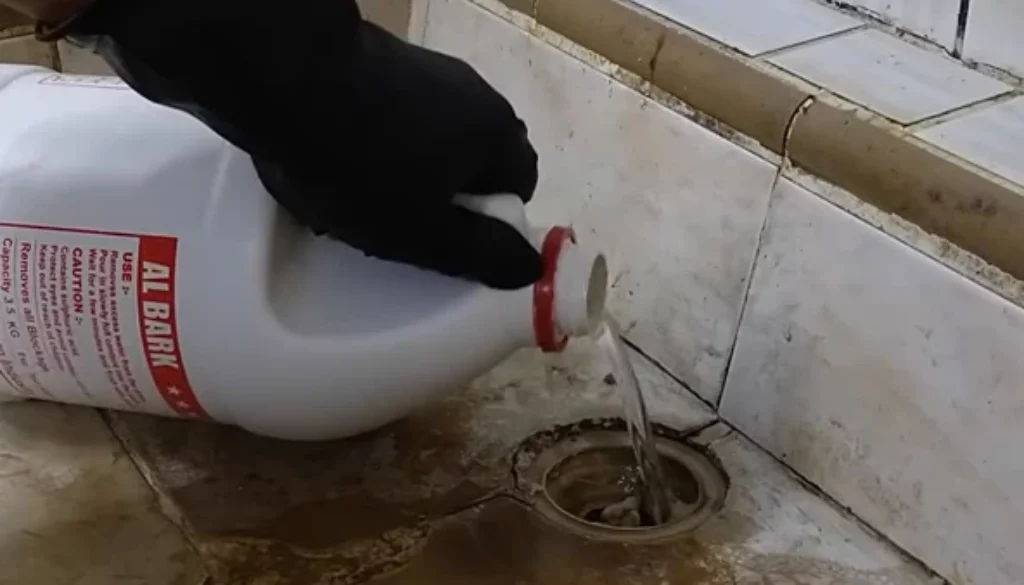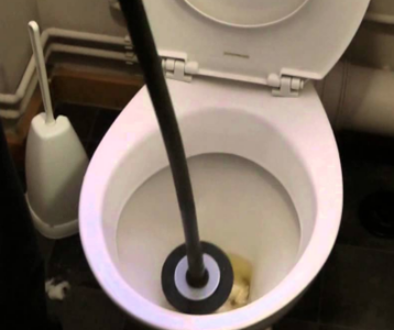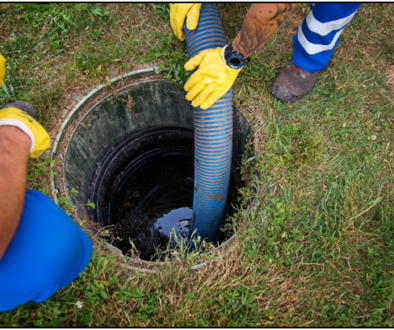How To Use Sulphuric Acid To Unblock Drains
Have you ever encountered a stubborn block in your drains that just won’t budge, no matter what you try? Well, fear not, because I’ve got just the solution for you! In this guide, we’ll explore the fascinating world of using sulphuric acid to unblock drains. Yep, you heard that right. We’re diving deep into the science of clearing those pesky blockages in a way that’s safe, effective, and dare I say, a little bit exciting!
Now, before we get started, I want to assure you that using sulphuric acid to unblock drains is a serious matter. It requires caution and careful handling. But don’t worry, I’ll walk you through each step, making sure you understand the process and the precautions you need to take. So, let’s roll up our sleeves and get ready to tackle those stubborn blockages together!
In this guide, we’ll cover everything from understanding why drains get blocked in the first place to the step-by-step process of using sulphuric acid to dissolve the obstructions. I’ll break down the dos and don’ts, provide you with some safety tips, and even share some alternative methods if you’re not comfortable using chemicals. So grab a pen, get ready to take notes, and let’s dive into the world of sulphuric acid and unblocking drains!
Dealing with a blocked drain? Here’s how to solve the issue without mentioning the specific chemical. First, protect yourself with gloves and safety glasses. Next, remove any visible debris with a plunger or drain snake. Then, carefully pour a recommended drain unblocking solution into the drain. Let it sit for the specified time, then flush with hot water. In most cases, this should unblock your drain effectively and safely.

How to Use Sulphuric Acid to Unblock Drains: A Comprehensive Guide
Introduction:
If you’ve been dealing with stubborn Blocked drains, sulphuric acid can be a powerful solution to unblock and restore the flow. However, using sulphuric acid requires caution and proper knowledge to ensure safety and effectiveness. In this comprehensive guide, we will walk you through the steps of how to use sulphuric acid to unblock drains, providing detailed information and essential tips. From understanding the nature of sulphuric acid to safety precautions and step-by-step instructions, this guide will equip you with the necessary knowledge to successfully tackle your drain blockages.
What is Sulphuric Acid and How Does it Work?
Sulphuric acid, also known as oil of vitriol, is a highly corrosive and potent acid commonly used in various industrial applications, including drain cleaning. Its powerful acidic properties enable it to dissolve various types of blockages, from hair and grease to soap scum and mineral deposits. When sulphuric acid comes into contact with organic matter or other substances causing the block , it reacts and breaks them down into simpler compounds, which can then flow freely through the drain. It is important to note that sulphuric acid should only be used in certain situations and with extreme caution, as it can be hazardous if mishandled.
Understanding the Risks and Safety Precautions
Before you start using sulphuric acid to unblock drains, it is crucial to understand the potential risks and take the necessary safety precautions to protect yourself and the surrounding environment. Sulphuric acid is a hazardous substance and should be handled with utmost care. Here are some key safety tips to keep in mind:
1. Protective Gear: Always wear appropriate protective gear, including gloves, goggles, and a face shield, to shield yourself from potential splashes or fumes.
2. Ventilation: Ensure proper ventilation in the area where you will be working. Open windows or use fans to dissipate any fumes generated during the process.
3. Avoid Mixing: Never mix sulphuric acid with other chemicals or products, as this can result in hazardous reactions and release harmful gases.
4. Handling and Storage: Store sulphuric acid in a cool, well-ventilated area away from incompatible substances. Avoid contact with skin or eyes and use proper handling techniques to prevent spills.
5. First Aid: In case of accidental exposure or ingestion, rinse the affected area with plenty of water and seek immediate medical attention. Have a designated first aid kit nearby.
By following these safety guidelines, you can minimize the risks associated with using sulphuric acid and ensure a safe and effective drain unblocking process.
Step-by-Step Guide: How to Use Sulphuric Acid to Unblock Drains
Using sulphuric acid to unblock drains requires careful step-by-step execution. Here’s a detailed guide to help you navigate the process safely and efficiently:
1. Read the Instructions: Begin by carefully reading the manufacturer’s instructions provided with the sulphuric acid product. Familiarize yourself with safety precautions, disposal guidelines, and any specific usage instructions.
2. Prepare the Area: Remove any standing water from the drain area and ensure proper ventilation by opening windows and doors. Protect the surrounding surfaces by placing a plastic sheet or absorbent material.
3. Dilute the Acid (Optional): Depending on the severity of the andblockage the concentration of the sulphuric acid product, you might need to dilute the acid with water. Follow the recommended ratios provided in the instructions.
4. Pour the Acid: Slowly pour the diluted or undiluted sulphuric acid into the drain, making sure to avoid splashes or spills. Use a funnel if necessary to direct the acid accurately.
5. Allow the Acid to Work: Let the sulphuric acid sit in the drain for the specified duration recommended by the manufacturer, typically 30 minutes to an hour. During this time, the acid will break down the blockage and dissolve the obstruction.
6. Flush the Drain: After the designated waiting time, flush the drain with plenty of water to remove any remnants of the blockage and the acid. Continue running water for a few minutes to ensure the acid is thoroughly washed away.
7. Clean Up and Dispose: Properly clean up any spills or splashes using absorbent materials and dispose of them following the recommended method, as specified in the manufacturer’s instructions or local regulations.
By following these step-by-step instructions and adhering to safety precautions, you can effectively use sulphuric acid to unblock drains and restore proper drainage in your home or workspace.
The Benefits of Using Sulphuric Acid to Unblock Drains
Using sulphuric acid to unblock drains offers several benefits that make it a popular choice for tackling stubborn blockages:
1. Effective Dissolution: Sulphuric acid has powerful acidic properties that allow it to dissolve a wide range of blockages, including tough ones caused by hair, grease, and soap scum.
2. Quick Action: When used correctly, sulphuric acid works rapidly, breaking down the blockage within a short period.
3. Cost-Effective: Compared to calling a professional plumber or purchasing specialized drain cleaning tools, using sulphuric acid is an affordable option for clearing drain blockages.
4. Versatility: Sulphuric acid can be used to unblock various types of drains, including those in sinks, tubs, showers, and toilets.
5. Prevention of Future Blockages: By effectively dissolving blockages, sulphuric acid helps prevent future buildup and blockages in your drains, keeping them free-flowing for longer periods.
It is important to note that while sulphuric acid can be an effective solution, it should only be used as a last resort for severe blockages and when other methods have failed. Consult a professional drain company if you are uncertain or have concerns about using sulphuric acid in your specific situation.
Precautions and Alternative Methods of Drain Cleaning
While sulphuric acid can be a powerful tool for unblocking drains, it is essential to exercise caution and explore alternative methods if appropriate. Here are some precautions to keep in mind:
1. Material Compatibility: Certain types of pipes, such as copper or plastic, may not be compatible with sulphuric acid. Determine the material of your pipes before using the acid and consult a professional if unsure.
2. Environmentally Friendly Options: If you are concerned about the environmental impact of using sulphuric acid, consider eco-friendly drain cleaning alternatives, such as enzymatic cleaners or mechanical methods like snaking.
3. Regular Maintenance: To prevent severe blockages, maintain your drains by regularly flushing them with hot water or using natural drain cleaners like baking soda and vinegar.
4. Professional Assistance: For complex or recurring drain blockages, it is advisable to seek the assistance of a professional drainage company who can provide expert advice and solutions tailored to your specific needs.
By taking these precautions and exploring alternative methods, you can ensure the safety of your drains, the environment, and yourself.
The Importance of Safe Drain Maintenance and Care
After successfully unblocking your drains with sulphuric acid or any other method, it is crucial to prioritize safe drain maintenance and care to avoid future blockages. Here are some essential tips to keep your drains flowing smoothly:
1. Regular Cleaning: Implement a regular cleaning routine using eco-friendly drain cleaners or natural methods like baking soda and vinegar.
2. Proper Disposal: Avoid pouring grease, chemicals, or any other substances that can cause blockages down the drain. Dispose of them following appropriate guidelines or recycling programs.
3. Hair Screens: Install hair screens or drain covers in showers, tubs, and sinks to catch hair and prevent it from entering the drain.
4. Hot Water Flush: Periodically pour boiling water down the drain to help break down any buildup and keep the pipes clear.
5. Professional Inspections: Consider scheduling periodic professional inspections of your drains to detect any potential issues or blockages before they become serious problems.
By incorporating these practices into your routine, you can maintain clear and healthy drains, preventing future blockages and ensuring the longevity of your plumbing system.
In conclusion, using sulphuric acid to unblock drains can be a highly effective solution when used correctly and with proper safety precautions. By following the step-by-step guide, understanding the risks involved, and exploring alternative methods when necessary, you can successfully address stubborn drain blockages. Remember to prioritize safe drain maintenance and care to avoid future blockages and ensure the smooth and reliable operation of your drainage system.”
Note: This article is for informational purposes only. It is always recommended to consult a professional drain company or follow the manufacturer’s instructions when dealing with drain blockages or using sulphuric acid.
Key Takeaways: How to Use Sulphuric Acid to Unblock Drains
- Always wear protective clothing and gloves before handling sulphuric acid.
- Dilute sulphuric acid with water in a 1:10 ratio before pouring it down the drain.
- Pour the mixture slowly into the drain to avoid splashing or creating fumes.
- Leave the acid solution in the drain for at least 30 minutes before flushing it with water.
- Handle sulphuric acid with caution and keep it out of reach of children and pets.
Remember to always prioritize safety when using sulphuric acid to unblock drains. Wear protective clothing and gloves, dilute the acid with water, pour it carefully, and give it enough time to work before flushing it away. Keep sulphuric acid out of reach of children and pets, and handle it with caution at all times.
Frequently Asked Questions
Welcome to our FAQ section on using sulphuric acid to unblock drains. Here, you’ll find answers to some common queries related to this topic. Read on to learn more!
—
Question 1: Can I use sulphuric acid to unblock any type of drain?
Answer: No, sulphuric acid is not suitable for all types of drains. It should only be used on metal pipes. Using it on plastic or PVC pipes can cause damage.
Before using sulphuric acid, make sure to check the pipe material or consult a professional for advice. They can provide guidance on the best course of action for your specific drain blockage.
—
Question 2: Is it safe to use sulphuric acid to unblock drains?
Answer: While sulphuric acid can effectively remove blockages, it is a highly corrosive substance and should be handled with extreme caution. Proper safety measures must be followed, including wearing protective clothing, gloves, and goggles.
It’s also crucial to use sulphuric acid in a well-ventilated area to avoid inhaling any harmful fumes. If you’re unsure about handling it safely, it’s best to contact a professional drain cleaner who is experienced in using sulphuric acid.
—
Question 3: How do I properly use sulphuric acid to unblock a drain?
Answer: When using sulphuric acid to unblock a drain, it’s important to follow these steps carefully:
1. Dilute the sulphuric acid as per the manufacturer’s instructions, usually mixing it with water.
2. Slowly pour the diluted acid down the drain, allowing it to come into contact with the blockage. Take care to avoid splashing or spilling.
3. Leave the acid to work for the recommended amount of time, usually around 30 minutes, but refer to the product instructions for guidance.
4. Flush the drain with plenty of water to remove any remaining acid and debris.
Remember, always read and abide by the instructions provided by the sulphuric acid manufacturer to ensure safe and effective use.
—
Question 4: Are there any alternatives to using sulphuric acid to unblock drains?
Answer: Yes, there are alternatives to using sulphuric acid for unblocking drains. One option is to use a drain snake or plunger to physically remove the blockage. You can also try using a natural drain cleaner made from a mixture of baking soda and vinegar.
If you’re hesitant about using chemicals or prefer a more eco-friendly approach, these alternatives can be effective in unblocking drains. However, keep in mind that their effectiveness may vary depending on the severity of the blockage and the type of pipe.
—
Question 5: What precautions should I take when using sulphuric acid to unblock a drain?
Answer: When using sulphuric acid, it’s essential to take the following precautions:
1. Always wear protective clothing, including gloves, goggles, and long sleeves.
2. Work in a well-ventilated area to avoid inhaling any toxic fumes.
3. Read and follow the manufacturer’s instructions for diluting and using the acid.
4. Avoid mixing sulphuric acid with other substances, as it may result in hazardous chemical reactions.
By taking these precautions, you can minimize the risks associated with using sulphuric acid and ensure your safety while unblocking drains.
Summary
Drains can get blocked, but you can use sulphuric acid to fix this problem. Pour the acid into the drain, wait for it to work, and then flush with water. Be careful when handling sulphuric acid, as it is corrosive and can cause harm if not used correctly. Remember to wear protective clothing and always follow safety instructions!
Using sulphuric acid is effective for clearing blockages, but it can be dangerous if mishandled. It’s important to be cautious and take proper safety precautions when using this strong chemical. If you’re unsure, it’s always best to seek professional help to ensure the blockage is safely and effectively removed.




